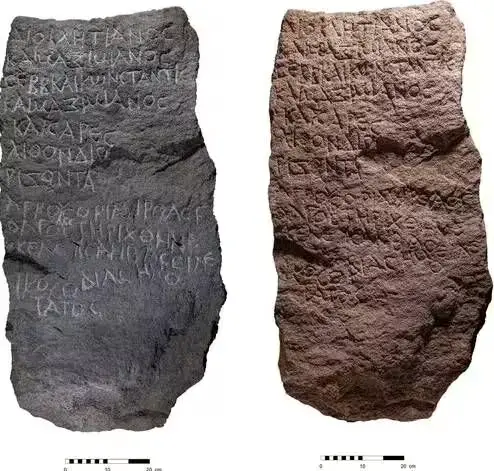Archaeologists have discovered a 1,700-year-old stone engraving in a site with references to the New Testament, where Jesus is believed to have “walked on water.”
The volcanic artifact engraved with Ancient Greek inscriptions can give us new insight into the boundaries of the Roman Empire.
It was discovered in Upper Galilee at Abel Beth Maacah and it is believed to have marked the territory of two previously unknown towns, Tirathas and Golgol, possibly linked to biblical places Gilgal and Golgotha.
Gilgal is mentioned in the Book of Joshua as an Israelite site, while Golgotha is known as the place where Jesus was crucified. Turritha, cited in 19th-century Lebanon, could potentially be the forgotten location of Tirathas.

The discovery suggests that the Roman reach was broader than we have assumed so far.
The stone talks of Caesar Marcus Aurelius Alexander and mentions four people who were managing Rome’s territories at the time.
Professor Uzi of Hebrew University told Mirror: “Finding a boundary stone like this not only sheds light on ancient land ownership and taxation but also provides a tangible connection to the lives of individuals who navigated these complex systems nearly two millennia ago.”
Archaeologists also uncovered a 1,500-year-old amulet in Galilee known as “Solomon’s Seal,” believed to protect women and children from evil spirits.

In a separate discovery, as remarkable as the ones above, archaeologists found a religious shine in Jerusalem untouched for over 3,000 years, believed to be sealed by the ancestors of Jesus.
The shrine, located into the rock on the eastern slope of the City of David, close to Temple Mount, includes eight rooms, a standing stone, and an altar.
The importance of these discoveries is immense as it provides fresh perspectives of the historical and biblical context of the area. It also reshapes our knowledge of Jesus’ time.
Please SHARE this article with your family and friends on Facebook.
Bored Daddy
Love and Peace
